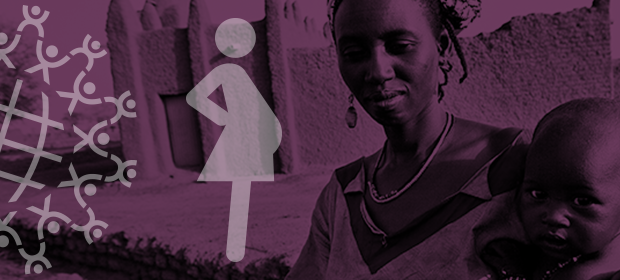Where We Work
See our interactive map


Salome was one of 830 women around the world who died that day from problems related to childbirth.
Liberian nursing assistant Salome Karwah was a woman, a sister, a wife. She also was a health worker and a survivor of Ebola who saved many lives during the 2014 Ebola outbreak in her country.
She survived Ebola, but nearly three years later, she did not survive complications after childbirth.
When TIME magazine chose to honor Ebola fighters as the “person of the year” in 2014, Salome’s photo was on the cover. At IntraHealth International, we felt gratified that health workers, and our mission of improving their performance and the systems in which they work, were being recognized.
Her death is a reminder that maternal mortality rates remain unacceptably high.
Of the 15,000 cases reported during the outbreak in West Africa’s three most-affected countries—Liberia, Guinea, and Sierra Leone—at least 11,310 people died, including over 500 health workers. But hundreds of health workers survived the epidemic, daring to provide care for those suffering from Ebola, people who were stigmatized by their families and communities. Sadly, many who survived the outbreak have been left without access to high-quality health care, as the countries’ health systems nearly collapsed under the weight of the virus.
Salome died on February 21, 2017. No, her death was not the result of having been infected with Ebola. It was, however, related. Not long after Salome gave birth to a healthy baby boy on February 17, she returned home. Within hours, she started convulsing. Her husband and sister took her back to the hospital—but none of the health workers there would touch her. Her sister said it was because she was known as an “Ebola survivor” and no one wanted to be in contact with her bodily fluids.
The exact cause of Salome’s death has not been identified, but her sister said, according to TIME, that she might have survived if she had received prompt treatment.
Salome also died because Liberia’s health system, despite the country’s best efforts, is still recovering from years of civil war. Too many women there die giving life every day. She was one of approximately 830 women around the world who died on that day from problems related to childbirth and delivery, according to the World Health Organization.
Salome was one of the courageous health workers who did not stop providing care for victims of Ebola—even after her own mother, father, brother, aunts, uncles, cousins, and niece died.
“Karwah used to joke that survivors had ‘super powers’— because after overcoming the disease they were forever immune from it,” TIME reported. “Like any superhero, she often quipped, it was her moral duty to use those powers for the betterment of humankind.”
Ebola set the countries back 15 to 20 years in maternal mortality rates.
After being contaminated by the Ebola virus, she was treated at a Médecins Sans Frontières (MSF) Ebola treatment facility outside of Liberia’s capital, Monrovia. Then she went back to work.
The “super powers” that had provided immunity from Ebola did not protect her from dying after childbirth.
A July 2015 World Bank Report, Healthcare Worker Mortality and the Legacy of the Ebola Epidemic published in The Lancet Global Health, reported that the West African Ebola outbreak would exacerbate deaths and disability not caused directly by the disease itself—especially maternal deaths. Researchers estimated that, as of May 2015, the loss of health workers due to Ebola led to estimated maternal death increases of 38% in Guinea, 74% in Sierra Leone, and as much as 111% in Liberia, compared to pre-Ebola rates, setting the countries back 15 to 20 years in maternal mortality rates.
Salome’s death is a tragedy. It reminds us that maternal mortality rates, despite decreasing dramatically by 43% from an estimated 532,000 deaths in 1990 to 303,000 in 2015, remain unacceptably high. It also is one more reminder of why we must continue building resilient health systems that have the health workers, medicines, supplies, and information and communications systems they need to save lives.
Get the latest updates from the blog and eNews




